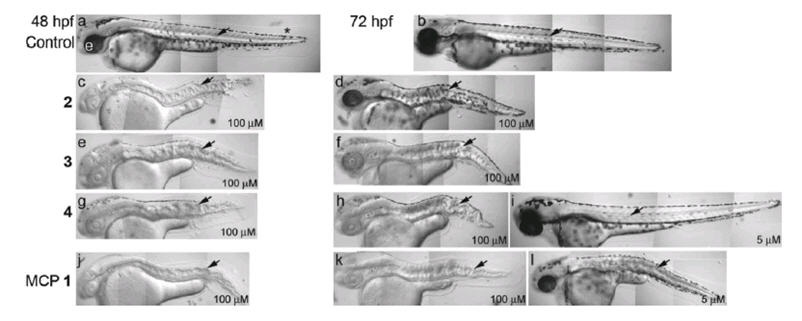Fig. 3.

MCP 1-induced notochord and pigmentation phenotypes. Lateral views of 48 (a,c,e,g,j) and 72 hpf (b,d,f,h,k,i,l) embryos after treatment with thiosemicarbazones derived from cyclohexanone 2 (c,d), butanal 3 (e,f), cyclopentanone 4 (g–i) or MCP 1 (j–l) or untreated controls (a,b). All treated embryos were exposed to 100 μM of the compound, except (i) and (l) where the dose was only 5 μM. Note pronounced notochord (arrow) deformation induced by all 100 μM treatments and by 5 μM MCP 1, whereas lower dose of 2, 3 and 4 usually resulted in normal notochord development (shown for 4 (i), but similar for others). Note reduced melanisation of eyes (e) and melanocytes (*) under high dose treatments, with 48 hpf treated embryos usually lacking or having very reduced melanin (c,e,g,j), but with melanisation recovering at 72 hpf after treatment with 100 μM 2 (d), 3 (f), or 4 (h). Treatment with 5 μM 2–4 does not affect melanisation at 72 hpf (shown for 4 (i), but similar for others). MCP 1 treatment results in a stronger melanisation phenotype, with little or no recovery at 72 hpf in 100 μM (k) and moderate recovery at 72 hpf in 5 μM (l) treatment.
